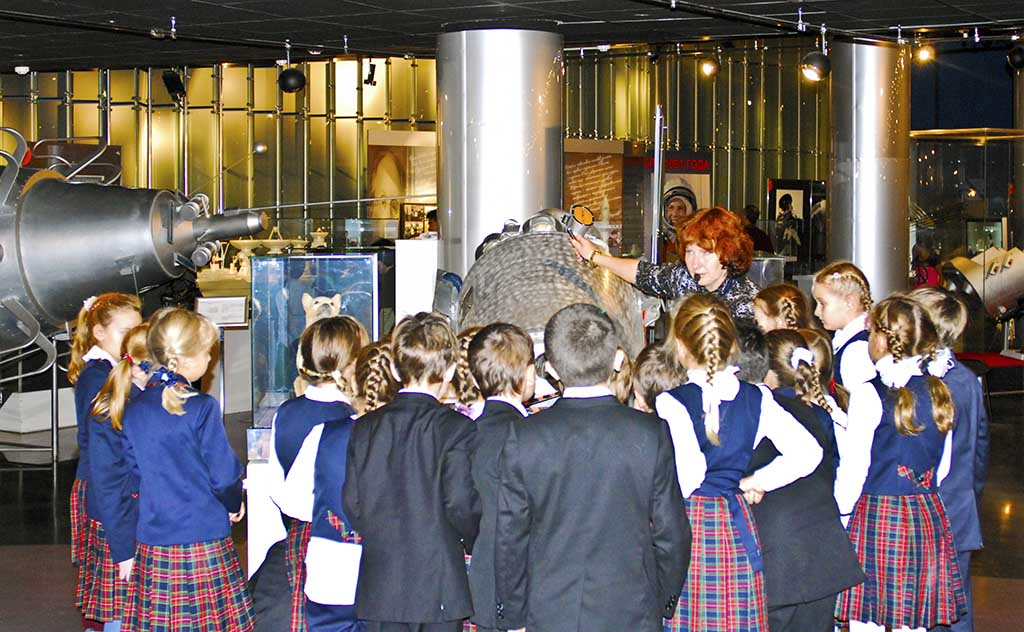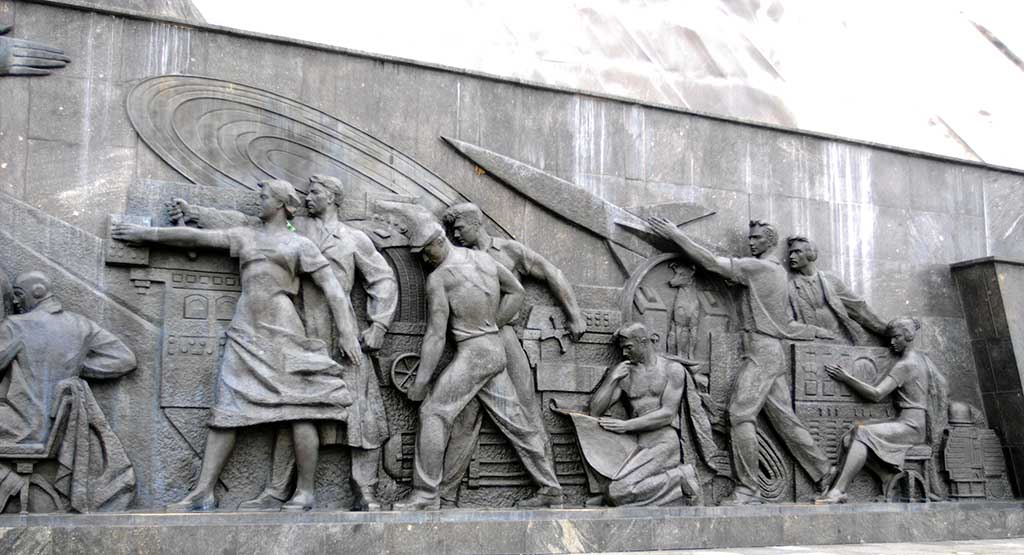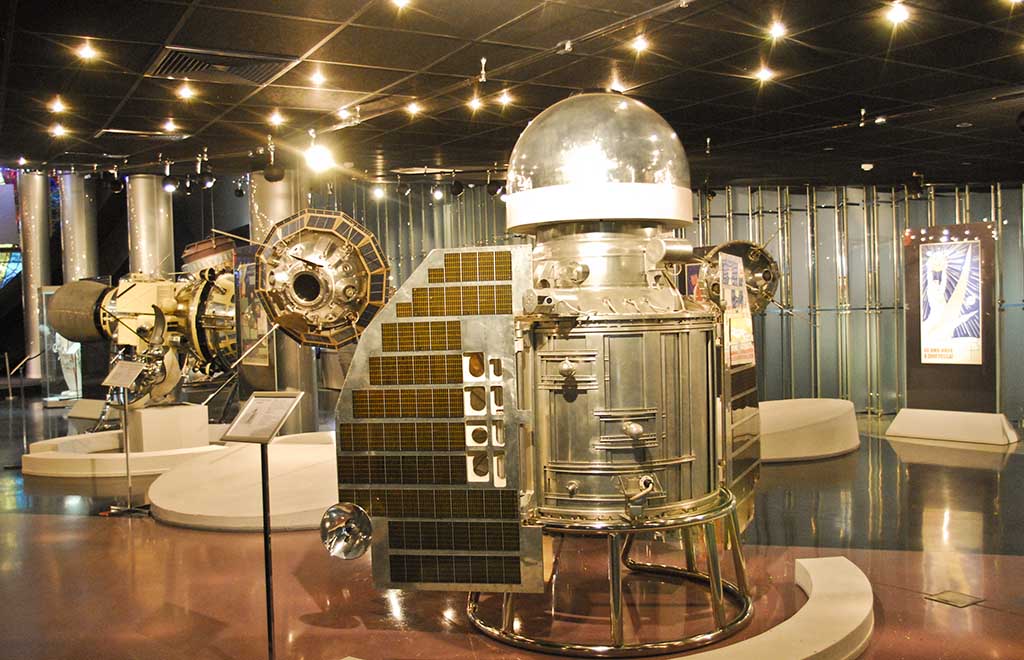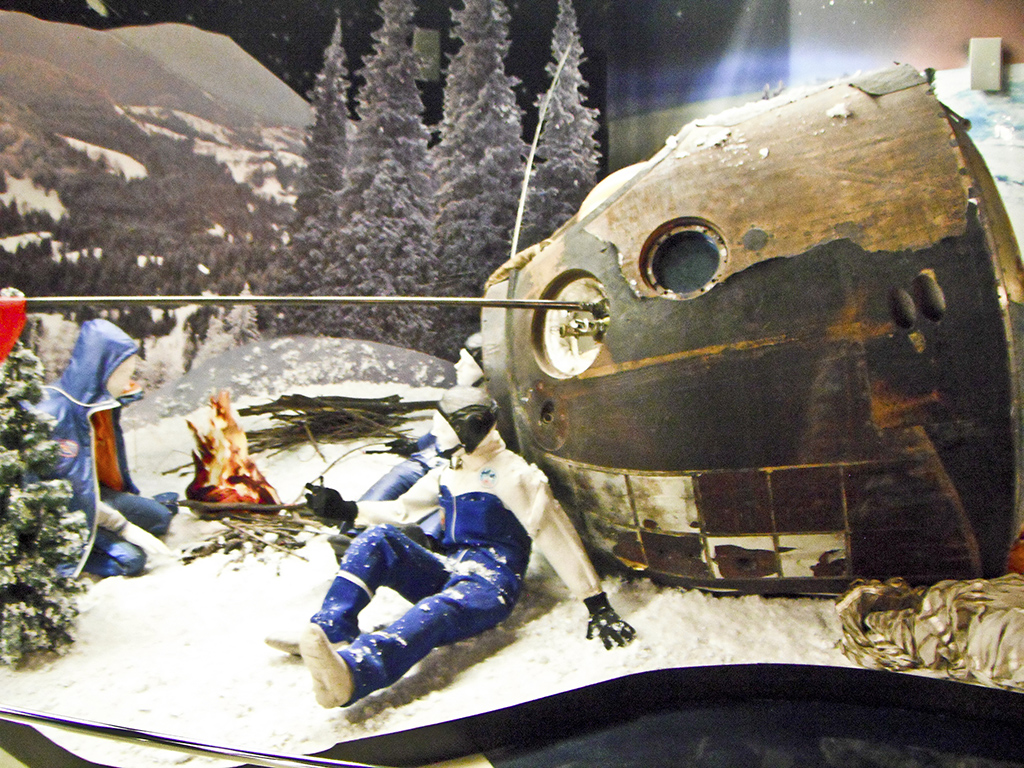
Remember the Space Race?
What a lot of hot air and fear was generated over the superpowers’ headline grabbing space feats–from the beeping of Russia’s Sputnik to Americans’ footprints on the moon.
It was also a time when price seemed no object in getting to the stars before the competition and when Russian spacemen and women were being portrayed as larger than life.
It all seems like a bygone era now, when governments are cutting funds to even keep a few astronauts in a space station in near-earth orbit. But the glory of shoot the moon competition lives on in a remarkable museum on the outskirts of Moscow.
The Memorial Museum of Cosmonautics is a must see both for those who remember past space feats and for those who dream of a time when human space travellers can explore far beyond the bounds of Earth. It was the shore excursion destination of passengers on the Scenic Tsar before its departure on a cruise to visit historic towns along the rivers of Russia.

I got a particular kick out of watching groups of well-mannered school kids huddle wide-eyed around primitive looking space capsules that had parachuted to Earth while their teachers explained the superiority of Soviet technology.
But looking around at Scenic’s passengers, we were just as awed by the space craft hardware and the photos of set-jawed cosmonauts who flew them.
We were looking forward to a special treat arranged for Scenic, an interview with a cosmonaut who was part of the first regular crew of the MIR space station.
But first we had a couple of hours to explore the sprawling museum, led by one of Scenic Cruises’ Moscow guides.

Even the walk from our bus to the museum was inspiring. A walk of fame lined with stars commemorates famous cosmonauts and frieze work on the walls represents brave Russians urging their spacemen skywards.
A centerpiece of the park in front of the museum is a soaring titanium sculpture: “the monument to the conquerors of space.” It depicts a gleaming rocket trailing a 300-foot long arc that represents the exhaust of blast off. Today, we might question all the pollution those rocket engines created but half a century ago, lots of smoke was considered a sign of pure power.
Inside the museum, one of the first exhibits is Laika the first dog in space–preserved stuffed in a display. Her fatal journey into space demonstrates just how rushed the Sputnik program was to get what was nicknamed Muttnik into orbit on the 40th anniversary of the Bolshevik revolution in November of 1957.
The crude battered capsule that carried the dog-stronaut looks as though it was built by students in a sheet metal class. Though the part husky Laika died on the mission, the publicity sparked a controversy that led to limits on using animals in experiments, so she didn’t die in vain.
Then we come to Yuri Gagarin, the first human to orbit the earth. Now there was a brave lad indeed. He knew the risk he was taking strapping into what can only be described as a flimsy metal ball with a picture window in 1961. But like all the cosmonauts, he was flying for the glory of the motherland and when he came back alive, he became a hero of the Soviet Union. His space suit that looks like an orange canvas coverall a deckhand might wear is on display, along with all the commemorative stamps and propaganda posters about beating the Americans into space.
Though the Russians never made a manned mission to the moon, they certainly explored its surface with bizarre craft. There`s an early version of the Lunakhod on display, a moon roving exploration vehicle that looks more like a space toilet that a scientific experiment.

But if I was ever to go into space I’d sure want to have a Soviet engineer on board. They could keep things flying seemingly with duct tape and courage.
Cosmonauts’ space capsules that came down in Siberia made somewhat harsher landings that the U.S. spacecraft which landed in the ocean. One display shows a crew that was lost for a couple of winter days until it was located by rescuers.
The MIR space station that rivalled the international space station was probably the last hurrah of the Soviet rivalry. A mock-up in the museum shows how really bare bones the MIR really was: more tin can than Star Wars death star.

Cost cutting eventually ended the era of Russian space innovation. By the 1980s, they were planning to boldly challenge America with a fleet of spacecraft called Buran, that look for all the world like clones of the American space shuttle. After only one flight, the Buran program as cancelled as the Communist regime collapsed in the early 1990s.
But things have been looking up lately because Russian rockets are now the lifeline for the international space station, which now happily includes Russians.
Displays show how much of what we eat today is based on foods that were originally developed for space. Freeze dried coffee and orange concentrate, Orbit gum to clean teeth, even dental floss had to come in a custom made drawstring pouch because they didn’t want anything floating in space.
For all the rah, rah emphasis on the superiority of the Russian space program in the exhibit, the Russians also have great respect for what the Americans accomplished. The displays also cover the American Apollo program and a moon rock presented by to the museum by Neil Armstrong.
I came away marveling at the human ability to innovate. Without the space program would we have had the portable music players, the cell phones and mini-cameras that many of the visitors used to record their experience. I really have great respect for the pioneers for their faith that even privation in space was for the betterment of all mankind.
Let’s hope that the next generations have as much optimism– without the them-versus-us mentality that came with the Cold War.








